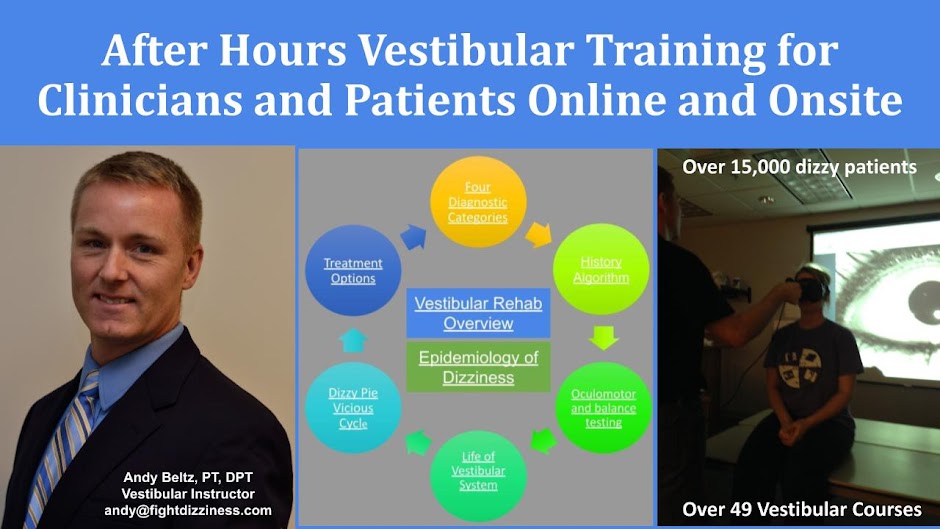Spontaneous spells of spinning with seconds to minutes duration can be difficult to treat. I am very interested in treatment options for vestibular paroxysmia (VP) so I wanted to conduct a literature review and see what I could find. Here is an abstract I wrote based off the following recent study:
Bayer, O., Brémová, T., Strupp, M., et al. (2018). A randomized double-blind, placebo-controlled, cross-over trial (Vestparoxy) of the treatment of vestibular paroxysmia with oxcarbazepine. Journal of neurology, 265(2), 291–298.
Purpose
Vestibular paroxysmia (VP) can be extremely frustrating to patients and clinicians because of it’s spontaneous and unpredictable nature. Spells usually last seconds and can occur many times a month. This monocenter, randomized, placebo-controlled, double-blind, cross-over clinical trial examined the therapeutic effect of Oxcarbazepine (OXA) in patients with VP.
Methods
43 patients between the ages of 18-80, who were diagnosed as having definite or probable VP, were enrolled for a treatment period of seven months total. There were two treatment protocols. Each protocol followed the same following time frames and study structure: three months of treatment or placebo followed by a one month “wash-out period” followed by the opposite placebo or treatment for three months. OXA was the study medication and identical filling capsules were used as placebo. Patients were randomised and evaluated by physicians periodically. Side effects were monitored and investigators and patients were blinded to the treatment allocation sequence.
Results
Unfortunately, the study experienced a high number of dropouts because of adverse events, relief of symptoms, or no improvement. In the remaining participants, OXA was found to reduce the number of attacks by nearly a half (3.15 under OXA, and 5.91 under placebo treatment).
Conclusion:
OXA treatment provided significant relief compared to placebo for individuals battling VP.
Relevance to Physical Therapy
One of the greatest challenges I face as a vestibular therapist is figuring out how to stabilize spontaneous attacks of spinning lasting seconds or minutes. In these tough cases, my role shifts from a provider of vestibular rehabilitation to a patient advocate helping triage to the most appropriate physician. I will often encourage my clients to video their eyes during attacks to confirm the presence or absence of a vestibular problem that may be causing the attacks. Once a vestibular problem is confirmed and characteristics fit the VP diagnosis, I can then make informed referrals to specialists. Sometimes patients will ask what treatment options exist and I can use this study as a potential source of information. The patient may choose to share this study with their physician which may assist in providing a more evidence based form of treatment.
